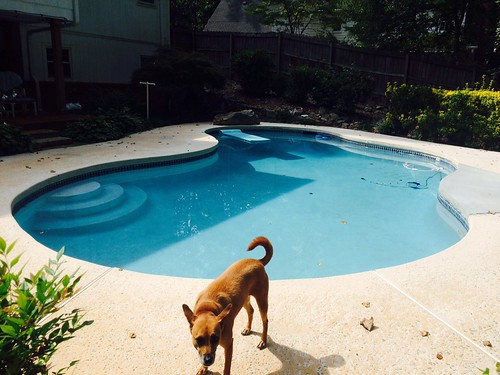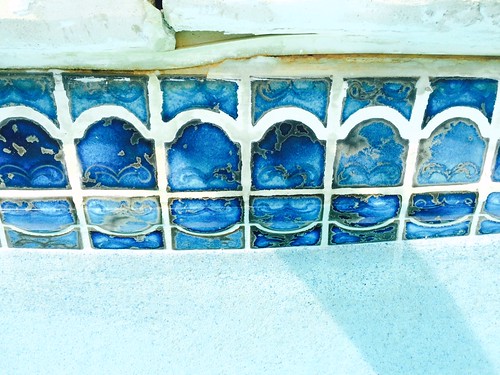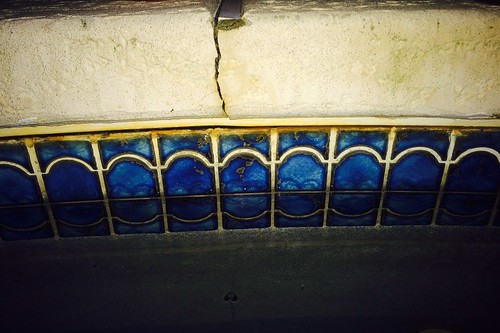Happy Labor Day weekend! Hopefully everyone is squeezing in their last pool days.
I have an issue with pool tiles falling off (count is up to 8) and a small gap between tiles and cantilevered deck (almost half the perimeter, 40 linear feet or so). It appears that at some point (prior to my ownership) the deck shifted causing a compromise in the mastic between the tiles and deck.
Photo of my gunite pool is below (you may recognize it from an earlier post...still working on getting a portion of deck repaired...but at least I got a refund!).

And here are the problem areas:



I am trying to make sense of all the information I have collected thus far:
(1) One pool contractor told me that if some tiles are falling off, they really need to replace them all instead of reinstalling the originals (I have the original pieces), because eventually others will falter. "Standard industry practice". Is that true? What if the problem areas of mastic were ripped out and silicone applied to seal the gap between tiles and deck? Wouldn't that prevent future problems?
(2) I have read on this forum that to properly repair tile, one should really drain the pool. I understand it may be difficult to do a tile/mastic repair upside down, and this will sound like a silly question, but couldn't a contractor get in the pool to do the work, assuming water level is lowered? :grin:
(3) How do you weigh the risk of the pool shell floating due to hydrostatic pressure if drained? This seems like a huge risk I would want to avoid, which brings me to my next question.
(4) Is there an “easy” way to determine the level of the water table? I have also seen posts on this, but I'm not keen on digging holes right next to pool deck, as I am dealing with Georgia clay/rocks, I have no knowledge of what pipes or other structures I might run into, among other reasons (I'm not strong or handy in that way... )
)
I have an issue with pool tiles falling off (count is up to 8) and a small gap between tiles and cantilevered deck (almost half the perimeter, 40 linear feet or so). It appears that at some point (prior to my ownership) the deck shifted causing a compromise in the mastic between the tiles and deck.
Photo of my gunite pool is below (you may recognize it from an earlier post...still working on getting a portion of deck repaired...but at least I got a refund!).

And here are the problem areas:



I am trying to make sense of all the information I have collected thus far:
(1) One pool contractor told me that if some tiles are falling off, they really need to replace them all instead of reinstalling the originals (I have the original pieces), because eventually others will falter. "Standard industry practice". Is that true? What if the problem areas of mastic were ripped out and silicone applied to seal the gap between tiles and deck? Wouldn't that prevent future problems?
(2) I have read on this forum that to properly repair tile, one should really drain the pool. I understand it may be difficult to do a tile/mastic repair upside down, and this will sound like a silly question, but couldn't a contractor get in the pool to do the work, assuming water level is lowered? :grin:
(3) How do you weigh the risk of the pool shell floating due to hydrostatic pressure if drained? This seems like a huge risk I would want to avoid, which brings me to my next question.
(4) Is there an “easy” way to determine the level of the water table? I have also seen posts on this, but I'm not keen on digging holes right next to pool deck, as I am dealing with Georgia clay/rocks, I have no knowledge of what pipes or other structures I might run into, among other reasons (I'm not strong or handy in that way...
Last edited:


